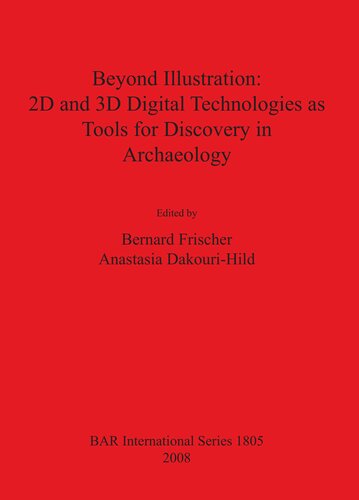

Most ebook files are in PDF format, so you can easily read them using various software such as Foxit Reader or directly on the Google Chrome browser.
Some ebook files are released by publishers in other formats such as .awz, .mobi, .epub, .fb2, etc. You may need to install specific software to read these formats on mobile/PC, such as Calibre.
Please read the tutorial at this link: https://ebookbell.com/faq
We offer FREE conversion to the popular formats you request; however, this may take some time. Therefore, right after payment, please email us, and we will try to provide the service as quickly as possible.
For some exceptional file formats or broken links (if any), please refrain from opening any disputes. Instead, email us first, and we will try to assist within a maximum of 6 hours.
EbookBell Team

4.1
100 reviewsThis book is timely. As the contributions in it illustrate, 2D and 3D modeling of cultural heritage is no longer used just to illustrate the location and appearance (past or present) of archaeological sites, but also as a tool to discover and recover data from archaeological remains. There are better ways of predicting where this data might be found under the surface. When applied to the legacy excavation data of a cultural heritage site -or when used to record the progress of a new excavation, 3D modeling has the potential to mitigate the irreversible and destructive nature of archaeological excavation, an unfortunate, ironic, and unavoidable central fact of archaeology as traditionally practiced. With the widespread adoption of 3D technologies to record and reconstruct archaeological sites, the archaeologist can virtually preserve the site through 3D data capture as we dig it up. And, once the 3D data gathered in the field has been modeled, it is possible to retrace decisions and test the validity of conclusions with more precision and confidence.